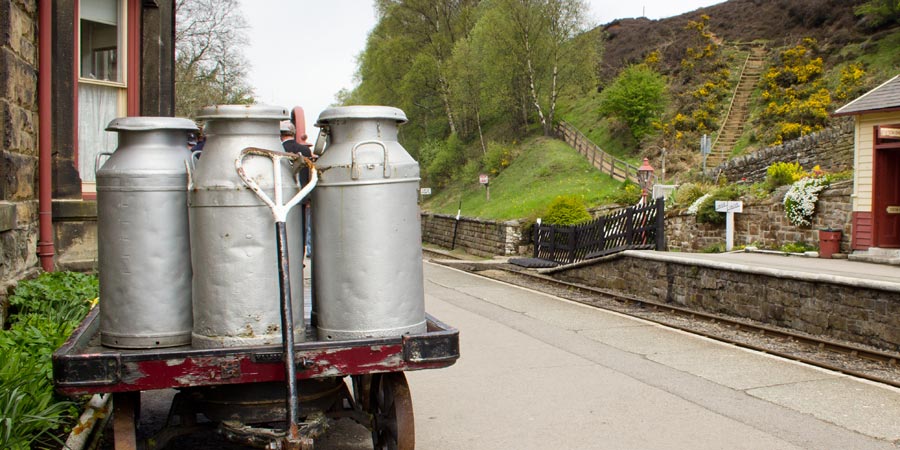It's probably one of the most famous unknown train stations in England. You might have seen it in films and television series, but not been sure where it is - or even if it exists at all outside a carefully constructed set in a studio. Goathland train station, the 3rd stop along the line of the North Yorkshire Moors Railway from Pickering to Whitby, does exist, and it's frankly idyllic.
Better known as the station that serves the fictional village of 'Aidensfield' in the television series Heartbeat, or for the younger generations who can't quite remember Heartbeat, the station of 'Hogsmeade' from the first Harry Potter film, this station is practically a dip back in time to the age of steam travel, and I was fortunate enough to catch it on a day where they were taking guests around behind the scenes.
With time to kill before the tour, I decide to take a very short walk up a hill to get the full view of the station that fits so nicely with the quaint idea of what a village station should be. Pretty limestone buildings fan out from the large station house in the centre. The original wooden shelter still stands on the opposite platform, and down the way from the station house, just off the pedestrian crossing on the tracks, is a small wooden shop, visually identical to the shelter except it's about 100 years younger and filled with Harry Potter merchandise. An ironwork bridge spans over the tracks. Not an original, as I was soon to learn, but one that was taken from Howdon-on-Tyne in 1986 to celebrate 150 years of the line.
We begin the tour in the ticket office, where it is, at its latest, the 1950s. All of the original ticket stampers and printers are still fully in use, using card stock exactly like they would have used when steam trains were the preferred method of travel on the rails. Dotted about the walls are certificates celebrating the green fingers of an old station master, and the ticket officer is dressed in a replica uniform of the conductors of the day.
We go behind here to the modern car park, to see the old weighing scales, looking for all the world to be just a sheet of metal embedded in the ground. Although it doesn't currently work, there are plans to restore it, but it doesn't stop me from surreptitiously jumping up and down a few times to see if it moves (as I weigh substantially less than a wagon, loaded or unloaded, it doesn't). The old coal and lime drops are next. Standing in them, they're just cellars, with limestone chips littering the floor, until you look up and see an enormous wagon looking as if it's waiting to drop its load on our unsuspecting heads.
The goods shed is next, however it is now the tea rooms. Going in through the back, past the various clutter of the ages, we emerge into the dark and timbered space. Here, the original crane that lifted various other heavy goods out of wagons sits, ready to leap into action again. Leaving the shop and crossing the ironwork bridge, we come across the original shelter, painted in a pleasant mustard and burgundy scheme. It has been extended up a bit, mainly to keep it from falling over as it is 70% wood, but looking at the photographs from the early 20th century helpfully provided by our guide, it's apparent that not much else about it has changed. Down the platform, the old waiting room is being refurbished. This building boasts of an original brick fireplace, located just off centre thanks to the addition of the women's bathrooms that share the building.
Now we go truly behind the scenes. Past the carriages that we are informed can be hired out for private use on the lines, we venture to what used to be the small buildings that housed the machinery to crush stone from Whinstone quarry (now defunct) for use for roads, but now stands in a tiered skeleton of stone foundations with the large mill stone still sitting in the lowest one. Now closed off to the public due to soil erosion, being able to see this is certainly a treat that I doubt I'll be able to experience again.
The distant and distinctive sound of a steam engine pulls me from my tour, and it's time to move on, however I'm leaving Goathland station with an increased sense of appreciation for this fascinating area of history, that the volunteers have so diligently kept alive.






